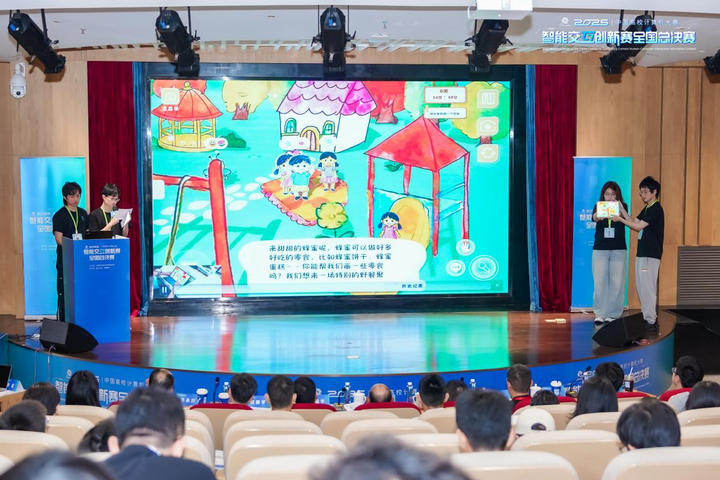Chinese Information Processing Society of China 2025 Annual Conference & 2nd China Large Model Summit (CIPS & CLM 2025) Opens Grandly in Beijing on October 28
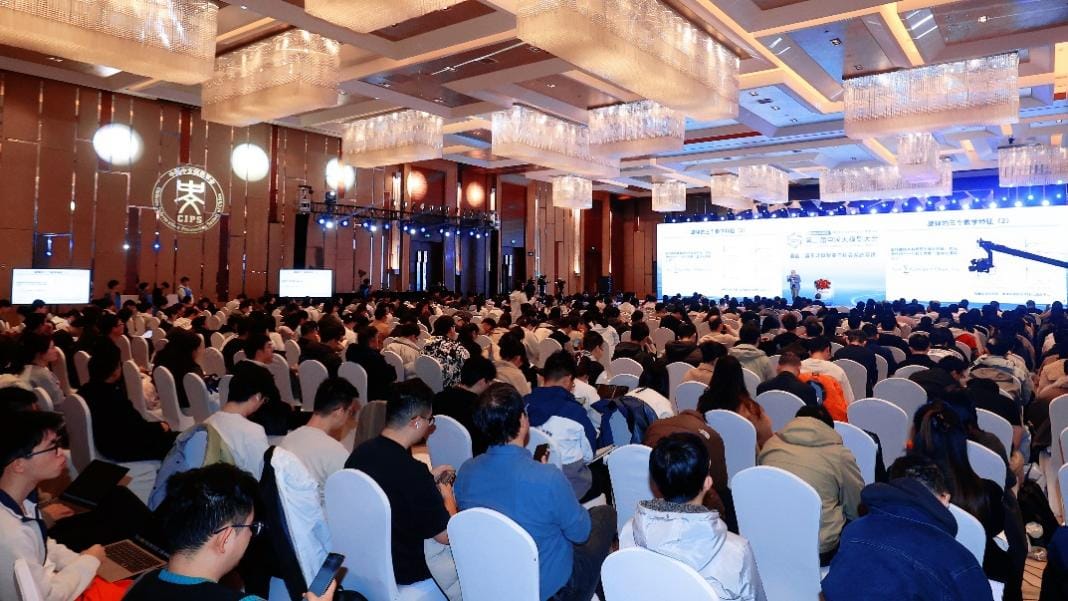
China Chinese Information Processing Society Academic Annual Conference 2025 & 2nd China Large Language Model Conference
(CIPS & CLM 2025)
Grand Opening in Beijing, October 28–29, 2025
Over 600 scholars, researchers, and industry leaders gathered in Beijing for the joint opening of the China Chinese Information Processing Society Academic Annual Conference 2025 and the 2nd China Large Language Model Conference (CLM).

△ Opening ceremony scene at CIPS & CLM 2025
---
Conference Focus & Themes
The 2025 event emphasizes:
- Theoretical breakthroughs in large models and AI
- Cutting-edge technology advancements
- Industrial implementation of AI solutions
- Ecosystem co-construction for large models
Highlights:
- Keynote addresses by Academicians Guan Xiaohong and Fang Binxing
- 13 high-level forums on hot topics such as:
- Generative AI
- Knowledge graphs
- Embodied intelligence
- Affective computing
- Social media processing
In addition, the conference saw:
- Launch of the CIPS Large Model Fund
- Announcement of the Doctoral Dissertation Incentive Program awards
- 5th Meeting of the 9th CIPS Council
---
Opening Ceremony Recap
Key Speakers
- Yang Erhong – Deputy Secretary-General of CIPS, Professor at Beijing Language and Culture University (host)
- Liu Peijun – Director-General, Dept. of Language and Information Management, Ministry of Education
- Fang Binxing – Academician, President of CIPS
- Huang Heyan – Supervisor-General of CIPS, Beijing Institute of Technology
---
Professor Huang Heyan
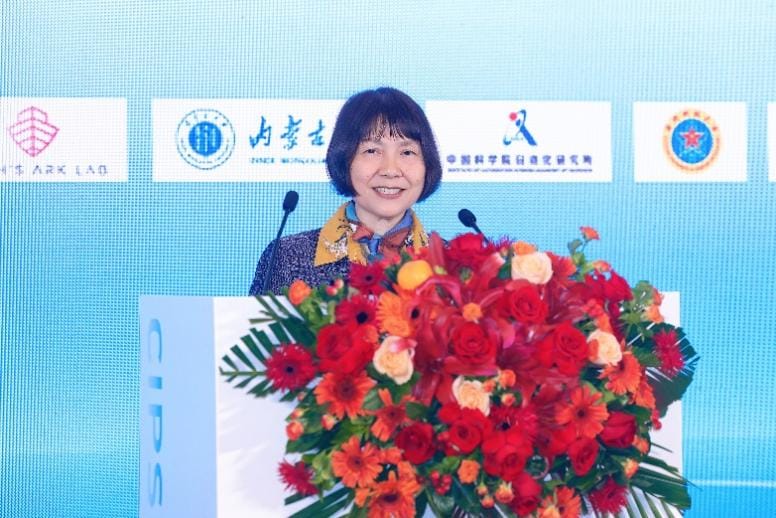
Opening speech by Huang Heyan
Key points:
- Echoed Xi Jinping’s guidance on self-reliant, safe, and fair AI development
- Noted State Council’s “AI+” Initiative—large models as a strategic pillar
- CIPS will continue:
- Aligning with national strategic needs
- Deepening large model fundamental research
- Encouraging cross-disciplinary cooperation
- Cultivating AI talent
---
Liu Peijun
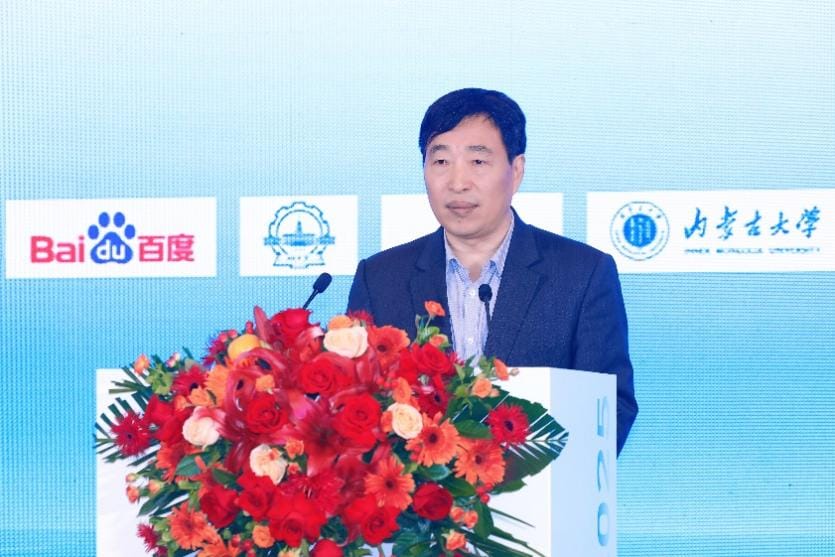
Remarks highlighted:
- January 2024 release of Digital Chinese initiative by Ministry of Education
- Large language models are both:
- Drivers of language modernization
- Dependent on vast, high-quality language data
- Language and technology must develop in synergy
---
Launch of Large Model Funds
Two major funding initiatives were introduced to support AI large model R&D and build academic–industry cooperation networks.
1. CIPS-LMG Huawei Cloud “Brainstorming” Fund
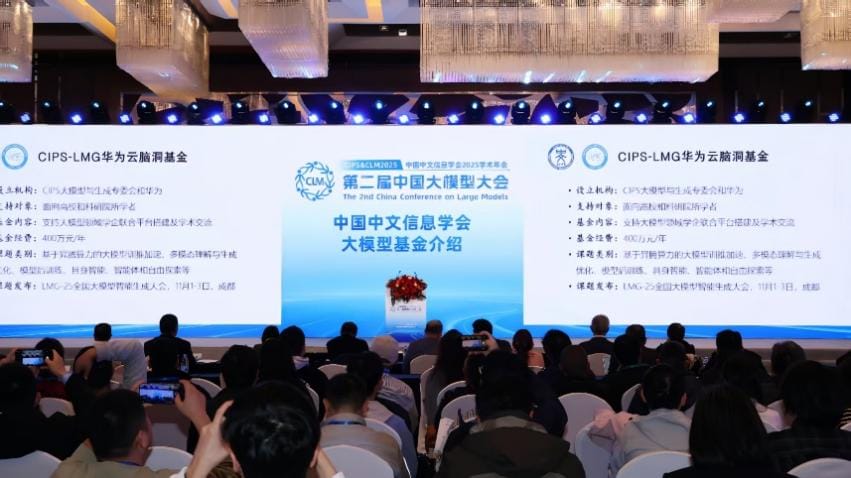
- Annual budget: RMB 4 million
- Focus areas:
- Acceleration on Ascend computing
- Multimodal understanding/optimization
- Post-training techniques
- Embodied intelligence & intelligent agents
- Free exploration topics
2. CIPS-SMP Qingzhi Large Model Fund
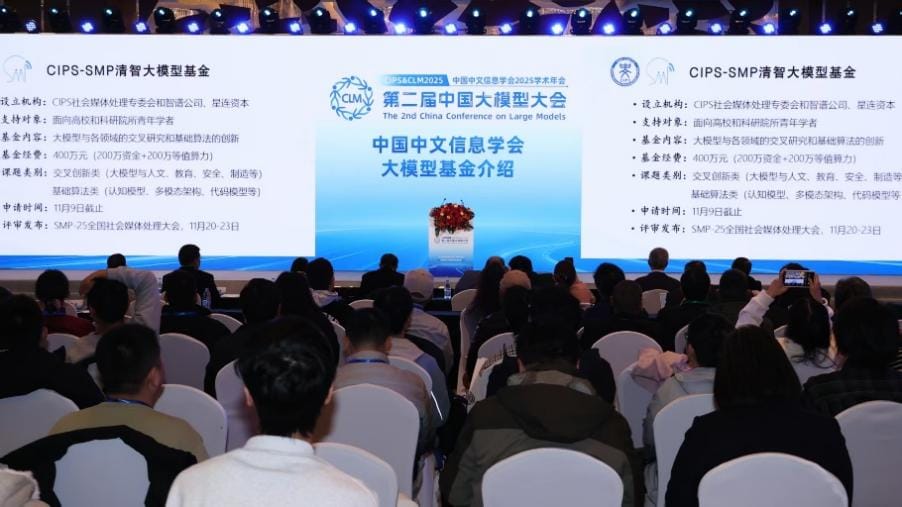
- Annual budget: RMB 4 million
- Focus:
- Interdisciplinary applications (humanities, education, etc.)
- Fundamental algorithms (cognitive models, multimodal architectures)
---
2025 Doctoral Dissertation Incentive Program
Ten PhD dissertations were recognized for outstanding contributions in Chinese information processing:
- Wang Xiaozhi (Tsinghua Univ.) — Knowledge enhancement in language models
- Ye Ziyi (Tsinghua Univ.) — Brain–computer interface-based retrieval
- Zhang Hanlei (Tsinghua Univ.) — Intent detection/discovery in open environments
- Chi Zewen (BIT) — Cross-lingual transfer learning
- Chen Xiang (Zhejiang Univ.) — Cross-modal transferable prompt learning
- Hu Dou (CAS) — Text representation via information theory
- Zheng Zhi (USTC) — Multi-dimensional recommendation
- Zheng Chujie (Tsinghua Univ.) — Aligning large language models
- Jin Jiarui (SJTU) — Sequential feature modeling in recommendation
- Liang Xiaobo (Soochow Univ.) — Language modeling & reasoning methods
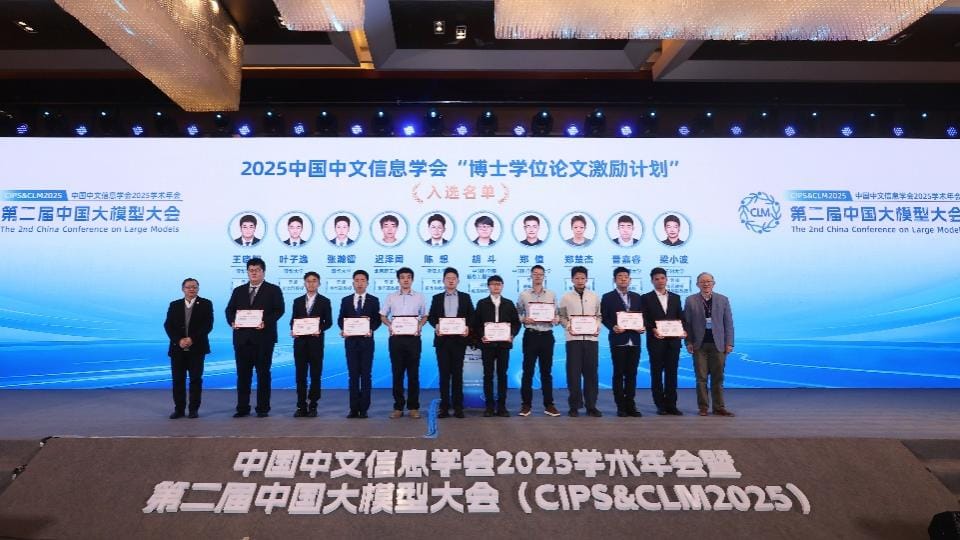
Award ceremony scene
---
Keynote Speech Highlights
Guang Xiaohong — Language, Music Computational Intelligence, and Power Laws
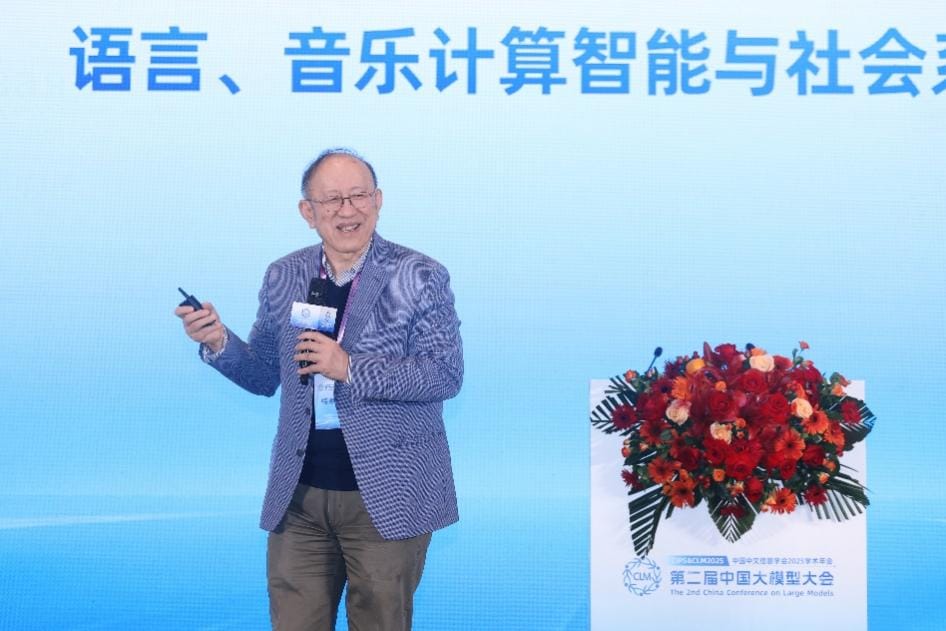
Explored mathematical power laws in natural, engineering, and social systems (language & music).
---
Fang Binxing — Meaning of AI Reward Function
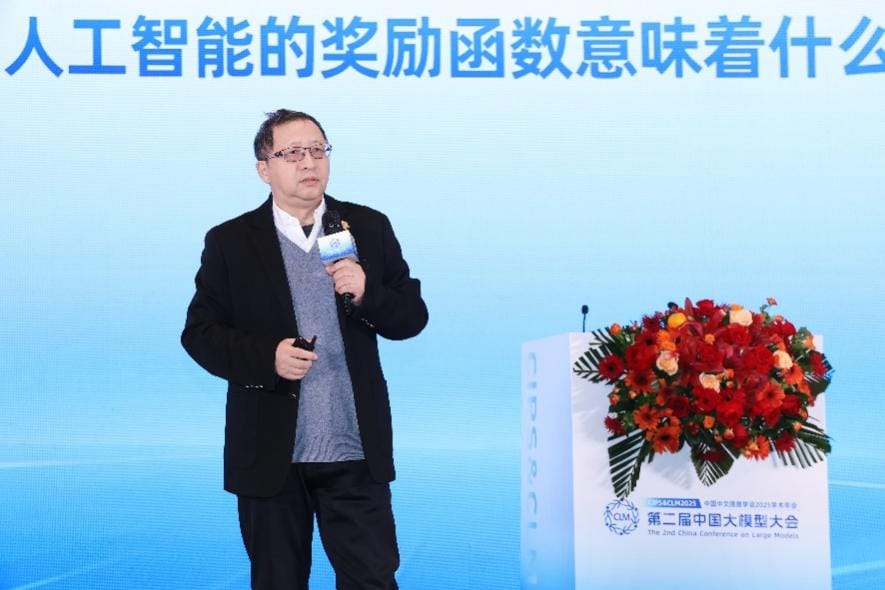
Contrasted loss functions and reward functions in AI:
- Loss: deterministic optimization, no autonomy
- Reward: introduces uncertainty & exploration—hint of volition-like behavior
---
Zhou Wanlei — Ethics & Security in LLMs
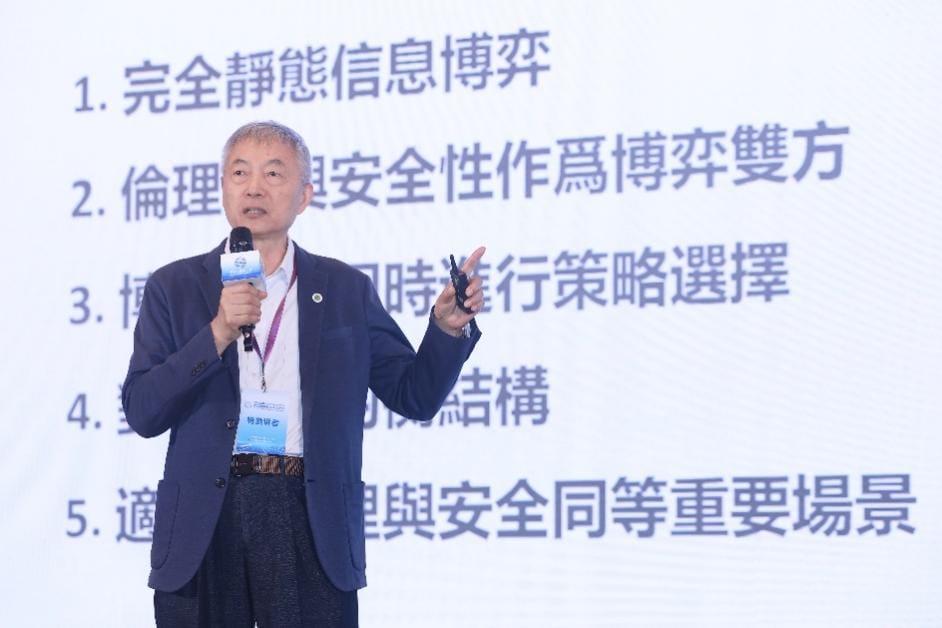
Breakthroughs in:
- Quantitative evaluation of ethics/safety
- Game theory–based balancing
- Proof & verification methods
---
Xiong Yan — Computational Power & Human IQ Multiplication

Computational power equated to national power, productivity, human power, intelligence.
---
Wen Jirong — LLaDA Non-Autoregressive LLM Paradigm

Challenged dominance of autoregressive modeling with scalable dialogue capabilities.
---
Qiu Xipeng — Contextual Intelligence for AGI
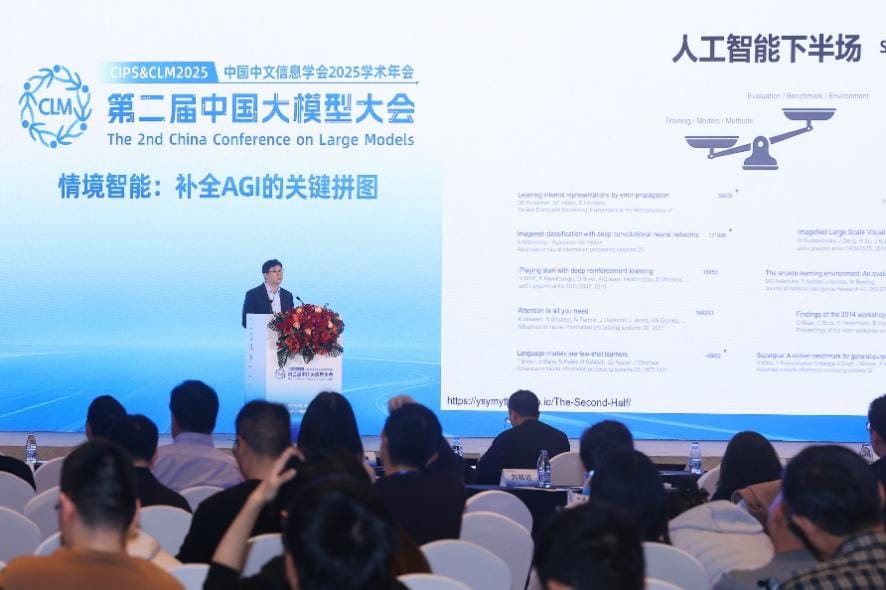
Proposed “context” as next key dimension in multimodal interaction & AGI progression.
---
Special Panel: Next Stop toward AGI
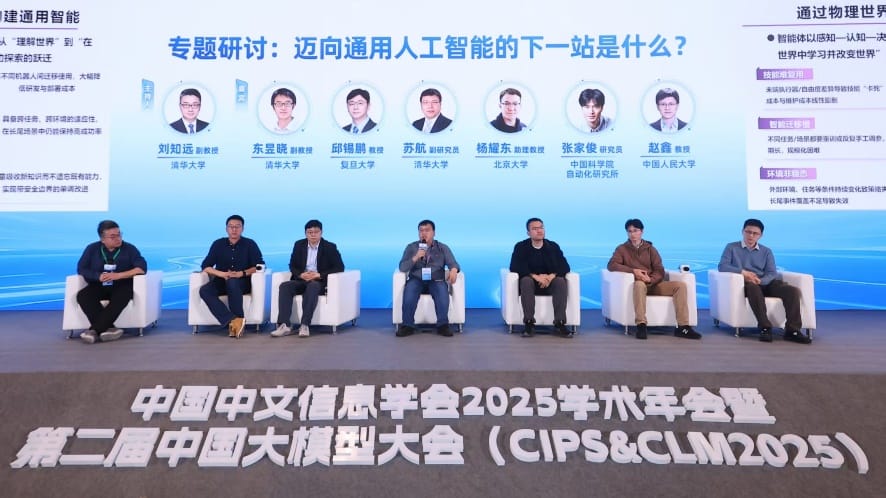
Led by Liu Zhiyuan (Tsinghua), featuring six domain experts.
Discussion points:
- Data quality & efficiency to drive generalization
- Intelligent agents: closed loop from perception ➜ cognition ➜ decision ➜ action
- Embodied intelligence & feedback to boost signal-to-noise
- Scientific intelligence as AGI testbed
---
CIPSC Council Meeting

5th meeting of the 9th Council, chaired by Sun Le:
- Reviewed 2025 achievements
- Set 2026 priorities
- Presented annual reports from committees
- Engaged in idea exchange for future growth
---
Thematic Forums (Oct 29)
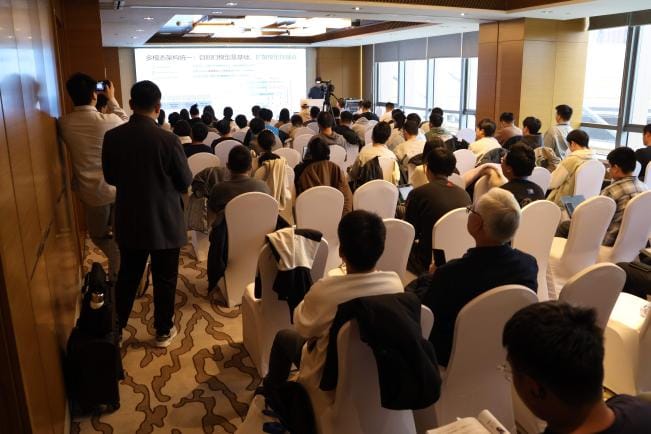
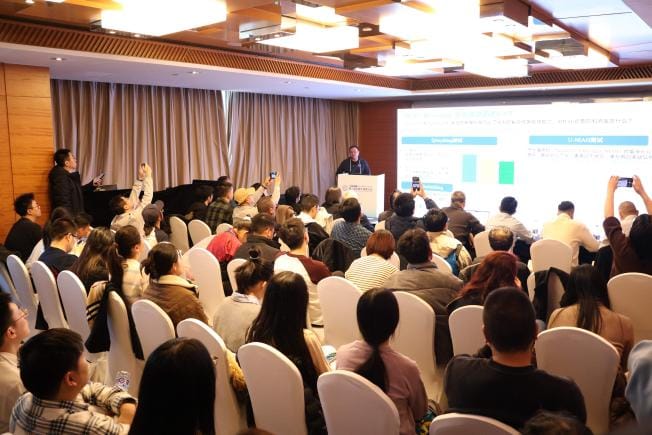
13 specialized committees hosted forums on:
- Generative AI
- Knowledge graphs
- Embodied intelligence
- Affective computing
- Social media processing
- Over 100 experts discussed latest advances, applications, trends.
---
Integrating Research with Application
Platforms like AiToEarn are emerging as bridges between AI research and creative industries:
- Open-source global AI content monetization
- AI-assisted cross-platform publishing to Douyin, WeChat, Bilibili, Facebook, LinkedIn, etc.
- Built-in analytics and AI model ranking (AI模型排名)
Such frameworks showcase how technical innovation can translate into economic and social value, reinforcing themes discussed throughout CIPS & CLM 2025.

